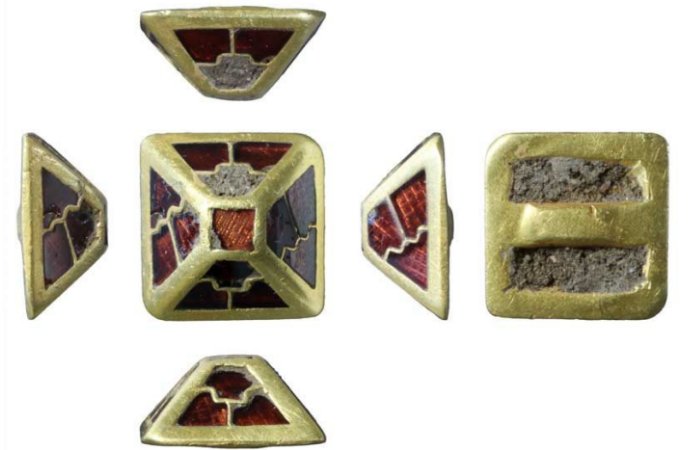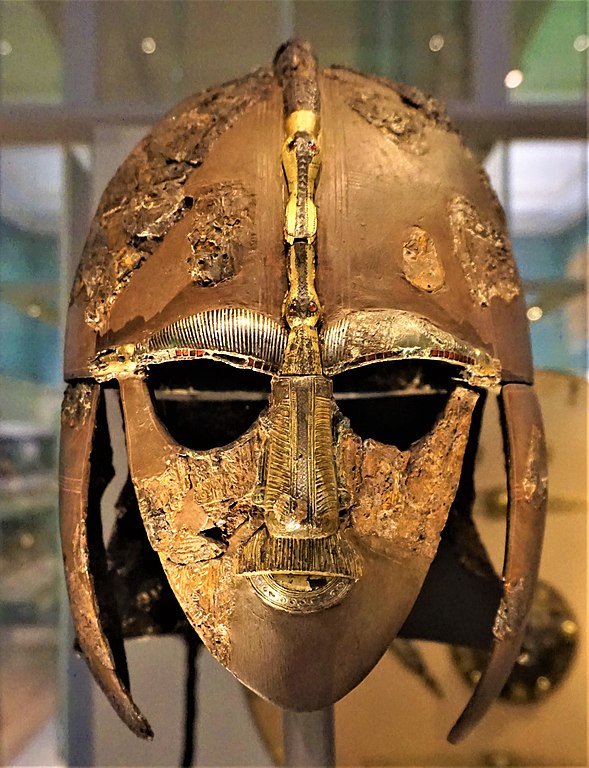Jan Bartek – AncientPages.com – A metal detectorist has discovered a magnificent, 1,400-year-old ‘sword-pyramid’ in Breckland, Norfolk, United Kingdom.
An artifact like this one usually comes in pairs, just like earrings which is why one must ᴀssume it was lost by a Sutton Hoo-era lord “careening around the countryside” on his horse.

Credit: Andrew William – Norfolk County Council
The artifact, made of gold and garnet, is tiny, being not more than about 0.4-inch by 0.4-inch and weighing just 3 grams. The sword-pyramid dates to between 560 and 630 A.D., when Norfolk was part of the Anglo-Saxon kingdom of East Anglia.
According to Finds liaison officer Helen Geake the pieces of garnet embedded in the Norfolk pyramid are from India or Sri Lanka, representing a distance of more than 5,000 and underscoring the incredible global trade occurring at the time.
Geake thinks the Anglo-Saxon artifact belonged to some of the upper class.
“It would have been owned by somebody in the entourage of a great lord or Anglo-Saxon king, and he would have been a lord or thegn [a medieval nobleman] who might have found his way into the history books.
“They or their lord had access to gold and garnets and to high craftsmanship,” Dr. Geake said.
One of the most famous artifacts of this historical period in the United Kingdom is the Sutton Hoo ship burial and famous helmet that may have belonged to Raedwald, King of all the kings of Britain.

The Sutton Hoo helmet. Credit: Joyofmuseums – CC BY-SA 4.0
The royal burial site at Sutton Hoo, a few miles from the Suffolk coast, East England, is definitely the most famous of all Anglo-Saxon sites and is mainly known for its outstanding funerary discoveries in Mound 1 that shed light on its outstanding funerary discoveries on the war gear of early seventh-century Anglo-Saxon rulers.
“In Mound No. 1 at Sutton Hoo, they found the great ancient ship and since then, the grave is known as “The Sutton Hoo Ship Burial”.
See also: More Archaeology News
Among many priceless goods (armor, weapons, coins, intricate gold jewelry, silver drinking horns, and trinkets, textiles, Byzantine treasures and fine clothes – all coming from all over Europe – there was also the famous Sutton Hoo helmet dated to 600– 650 AD.” 1
Artifacts such as the Sutton Hoo helmet, burial, and now the unearthed ‘sword-pyramid’ provide us with more knowledge about the Anglo-Saxon period that lasted 600 years, from 410 to 1066.
Written by Jan Bartek – AncientPages.com Staff Writer
Expand for references
- Sutherland – Sutton Hoo Ship Burial And Famous Helmet That Could Belong To Raedwald, King Of All The Kings Of Britain, AncientPages.com





